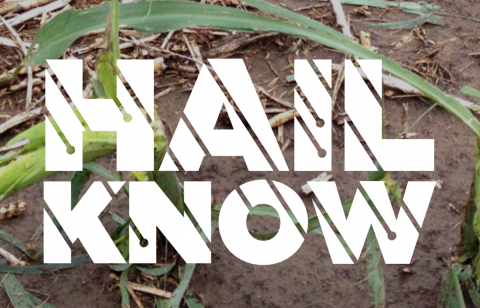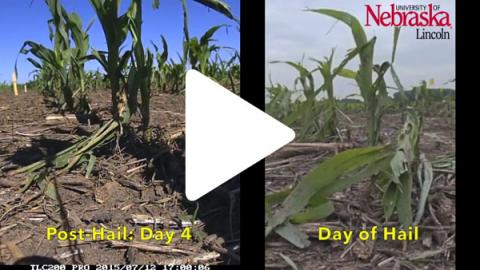Severe Storms and Hail-Damaged Crops: Steps for Making the Right Decisions
June 14, 2018
After recent severe storms that rolled across parts of Nebraska, growers are encouraged to wait 7-10 days to fully assess crop damage and determine next management steps. Research-based estimated yields from replanting now are included.
When Hail Strikes, Find Answers at Hail Know
March 22, 2018
Hail strikes Nebraska crops each year, creating uncertainty and questions for farmers: “Does the level of damage warrant replanting or will the remaining stand yield better than a replant would? How should I adjust inputs for the remaining season? Would a cover crop be cost effective?”
The Hail Storm: Why Here? Why Now?
Hail impacts many communities and industries each year, causing annual economic losses in excess of $1 billion. Hail can occur anywhere in the world; however, the topography and geography of the United States favor the development of tornadoes and strong hail-producing thunderstorms.
Video: 7-Day Time Lapse of Corn Recovery from Hail Damage
As part of a 2015 University of Nebraska-Lincoln research project on the effects of hail on crop development, Justin McMechan used time lapse photography to show how V4 corn recovered during the seven days post hail. McMechan and Roger Elmore, Extension Cropping Systems Specialist, used a hail machine.
Video: Cover Crops
If replanting isn’t an option after hail, adding cover crops in a poor stand may help you reap benefits in the current year and next year. Cover crops can take up applied nitrogen not taken up by the current crop and repurpose it for next year’s crop. They can also suppress weeds and provide late-season forage.
Video: Managing a Recovering Crop
In addition to primary plant injury from hail, damage can occur later in the season from bacterial pathogens that enter plant wounds. This video addresses the potential for continued plant injury from bacterial disease and how best to manage harvest and grain storage. it also notes research showing that fungal pathogens do not cause additional injury post-hail.
Video: Replanting Considerations
The decision to replant after hail can be difficult and is often unclear, especially when hail occurs in late May through June. Will the current crop recover and provide a reasonable yield? Will replanting offer a better yield? This video explores how to assess stand injury and yield potential as well as other factors to consider.
Video: Crop Insurance Risk Management
How can you assess your risk of crop hail damage? What do you need to know when considering hail insurance coverage levels, policies, and endorsements? A Nebraska Extension crop insurance specialist outlines key steps in managing risk through crop insurance.







